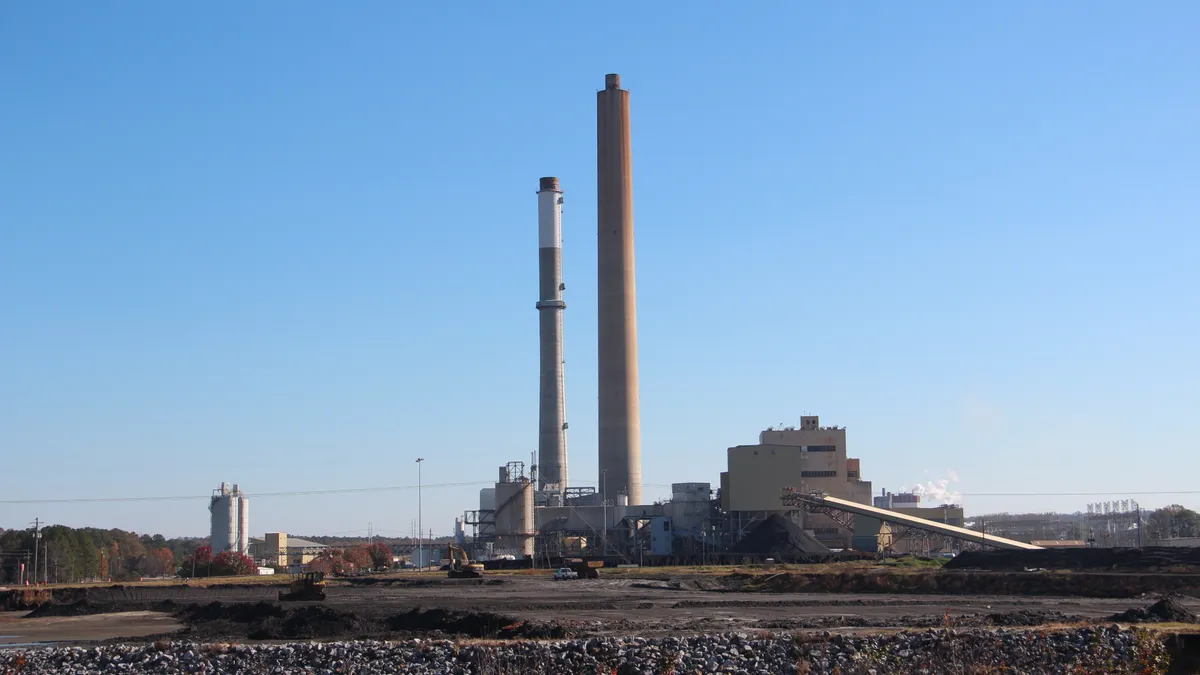Dive Brief:
- Georgia Power proposed retiring an additional 982.5 MW of coal capacity in its Integrated Resource Plan 2019 draft, submitted to the state's Public Service Commission (PSC) on Jan. 31.
- The plan adds energy-saving programs expected to reduce peak demand supply by 1,600 MW by 2022 and requests up to 1,000 MW of renewable energy resources for procurement, more than doubling its renewable energy capacity by 2024. Additionally, the utility notes the likelihood of additional natural gas technologies such as combustion turbine (CT) and combined cycle (CC) plants to its system amid low price forecasts for gas.
- Along with the news of expected coal plant retirements, Georgia Power became the first of Southern Company's subsidiaries to address resilience in its IRP, which Southern CEO Tom Fanning previewed this month. No specific resilience enhancements were requested, but Fanning had said this could lead to further study and a bigger role later.
Dive Insight:
The proposed retirements of Plant McIntosh Unit 1 and Plant Hammond Units 1-4 are based on analysis showing "sustained low gas prices combined with reduced energy demand growth continue to place economic pressure on the Company's remaining coal-fired generating units," Georgia Power's IRP stated.
Environmental groups that have advocated for coal plant retirement met the news with mixed reactions.
The Sierra Club's Beyond Coal campaign was pleased with the "long-overdue" retirement announcements. "We're also glad the company appears to be avoiding the traps bedeviling other utilities in neighboring states: new fossil fuels buildout and the dangers of fracked gas," Stephen Stetson, the campaign's representative in Georgia, said in a statement.
However, the Southern Alliance for Clean Energy said the Georgia filing was not ambitious enough, "only acknowledging the inevitable with the retirement of these two minimally-operating plants."
But Georgia Power noted the two plants provided resiliency and reliability services in recent years while under annual spending limitations imposed since its 2016 IRP. The utility wrote that the system would "maintain a sufficient reserve margin through 2028" with the retirements.
Georgia Power has retired over 3.1 GW of coal capacity in the economic interest of its customers, representing about 20% of its 2018 peak load, according to its IRP. Its resource capacity forecast for the summers of 2019 and 2024 shows a diverse mix of renewables, gas, coal, demand side options (DSO) and nuclear. The marked increase in nuclear capacity is due to the target in-service dates for two new nuclear units at Plant Vogtle, anticipated in November 2021 and 2022.
"Natural gas-fueled simple-cycle CTs d(dual fuel option) and CC units are the generating technologies most likely to be added to the System in addition to renewable generation and DSOs," the utility wrote in its IRP.
Georgia Power had previously installed equipment in McIntosh Unit 1 and Hammond Units 1-4 to comply with the Environmental Protection Agency's Mercury and Air Toxics Standards.
In its 2016 IRP, the utility was approved for more solar deployment than proposed in this filing, according to the Southern Alliance's press statement, despite the significant cost decreases for utility-scale solar.
IRP filings are required before the Georgia PSC every three years.














